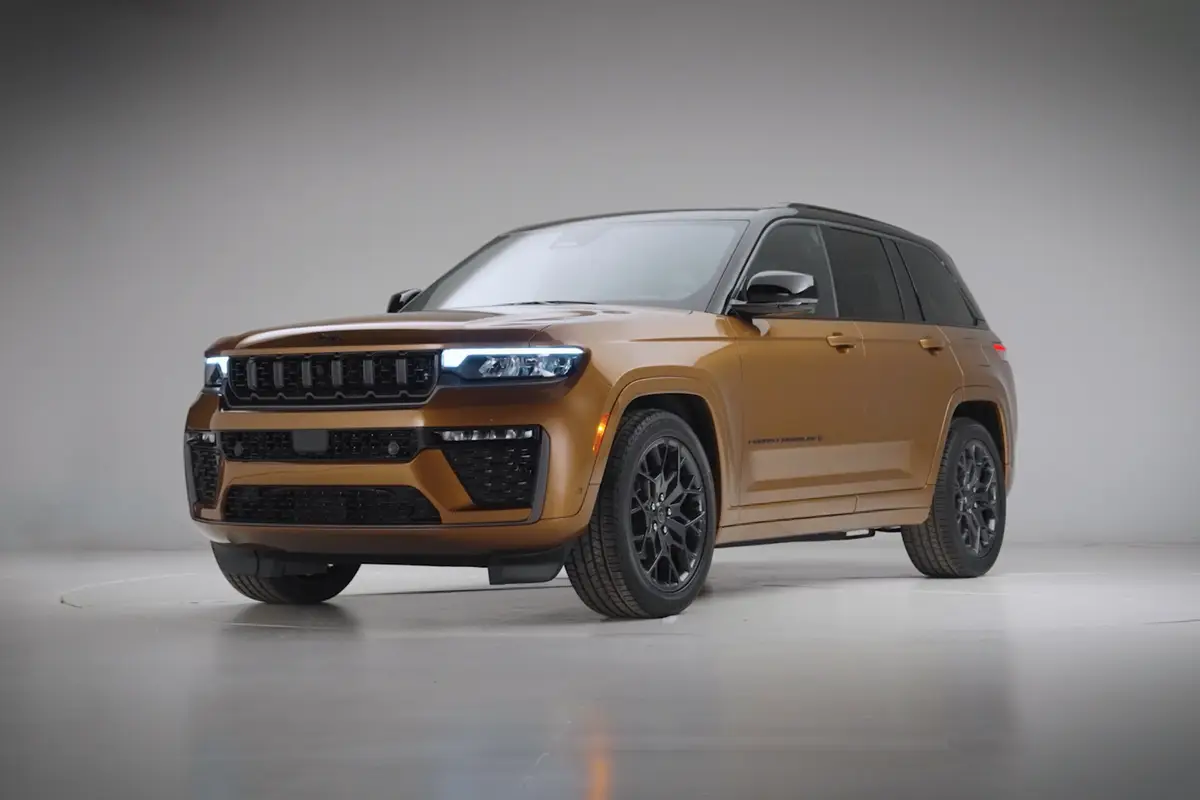2017 Jaguar F-Pace: Car Seat Check

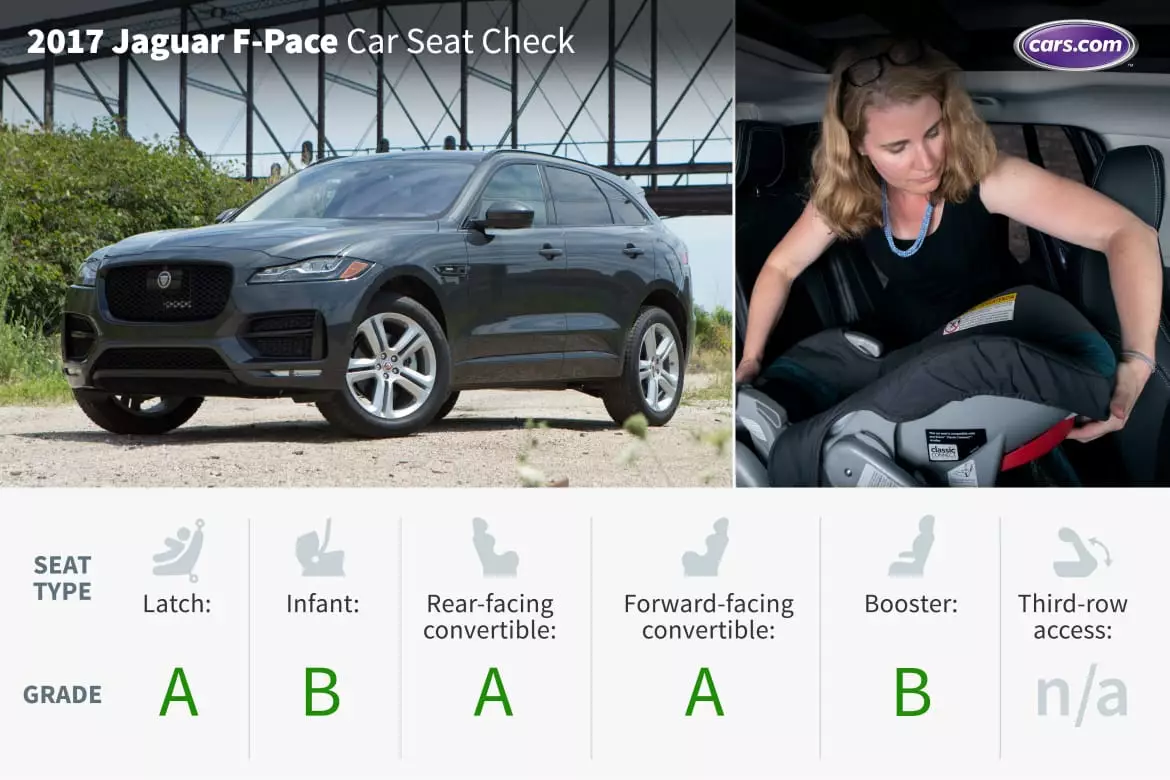
CARS.COM — Sales of SUVs are hot, so it’s no surprise that carmakers are getting into the game. Jaguar introduced its first SUV this year, the 2017 F-Pace. The luxury SUV has seating for five and although it didn’t fare very well against the 2016 Volvo XC90 in Cars.com’s Luxury Face-Off, it did well when it comes to car seats; accessible Latch anchors made it easy to install two child-safety seats.
How many car seats fit in the second row? Two, but three may work depending on your type of car seats.
What We Like
- The two sets of Latch anchors in the outboard seats are under removable plastic covers and are easy to find and use.
- In rear-facing mode, our convertible seat installed easily and had ample room.
- In forward-facing mode, the seat fit well. We had no trouble finding and using the top F-Pace’s tether anchor; there are three of them near seatbacks’ base.
What We Don’t
- Although the infant seat was easy to install, we needed more room. Our 5-foot-8-inch front passenger had about a half-inch of space between her knees and the glove box.
- The F-Pace’s large seat bolsters moved our booster seat over just enough that it was difficult to use the seat belt buckle. We had to scoot the booster over before buckling up, which means kids can’t buckle independently. The buckle is on a stable base, however, making it easier to grasp.
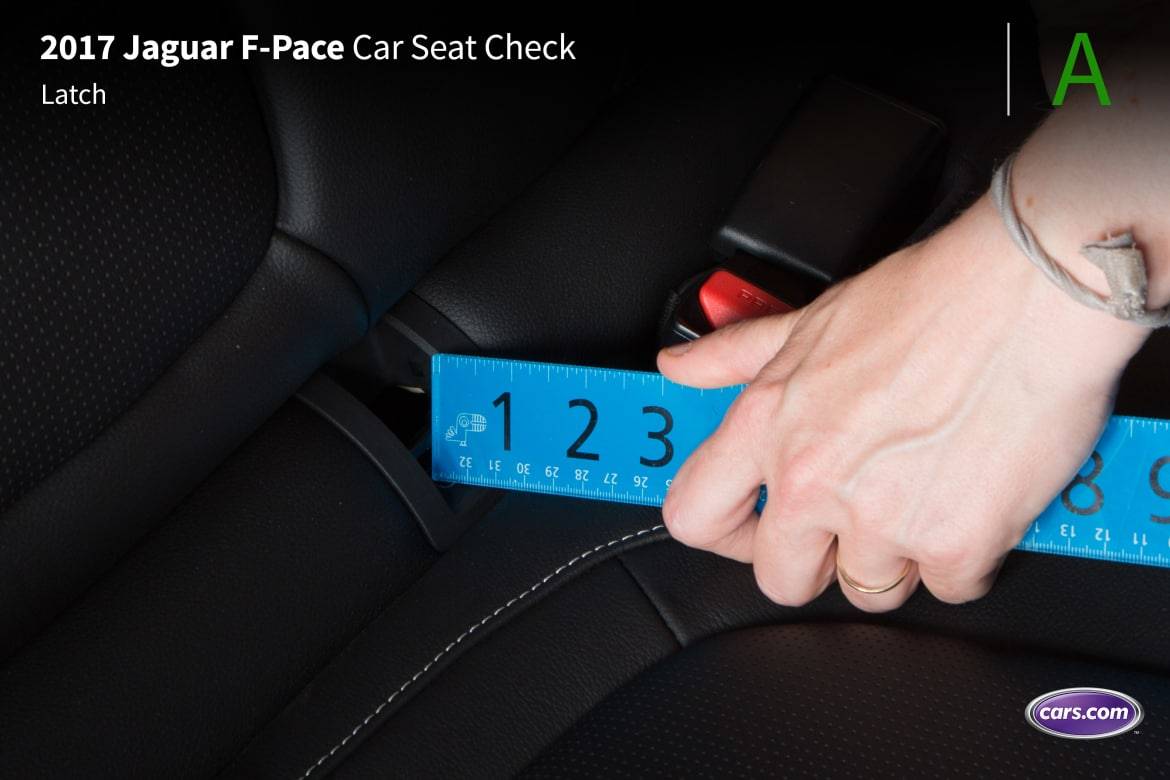

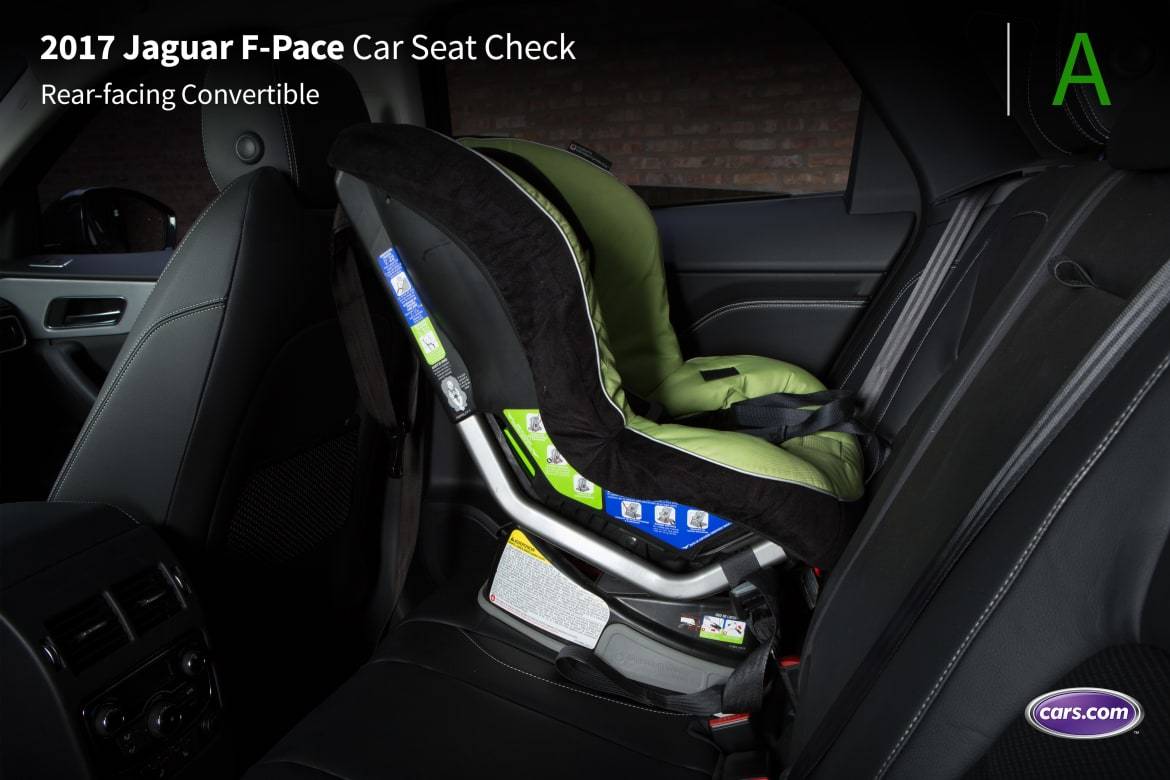
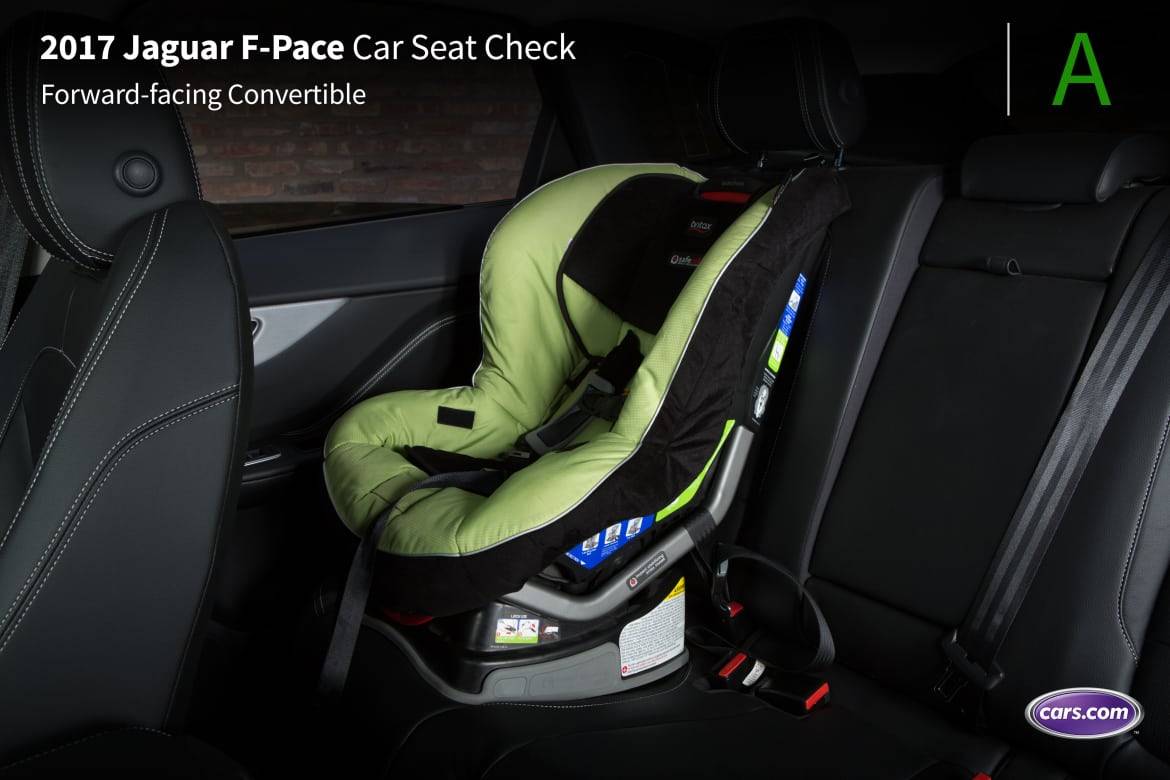
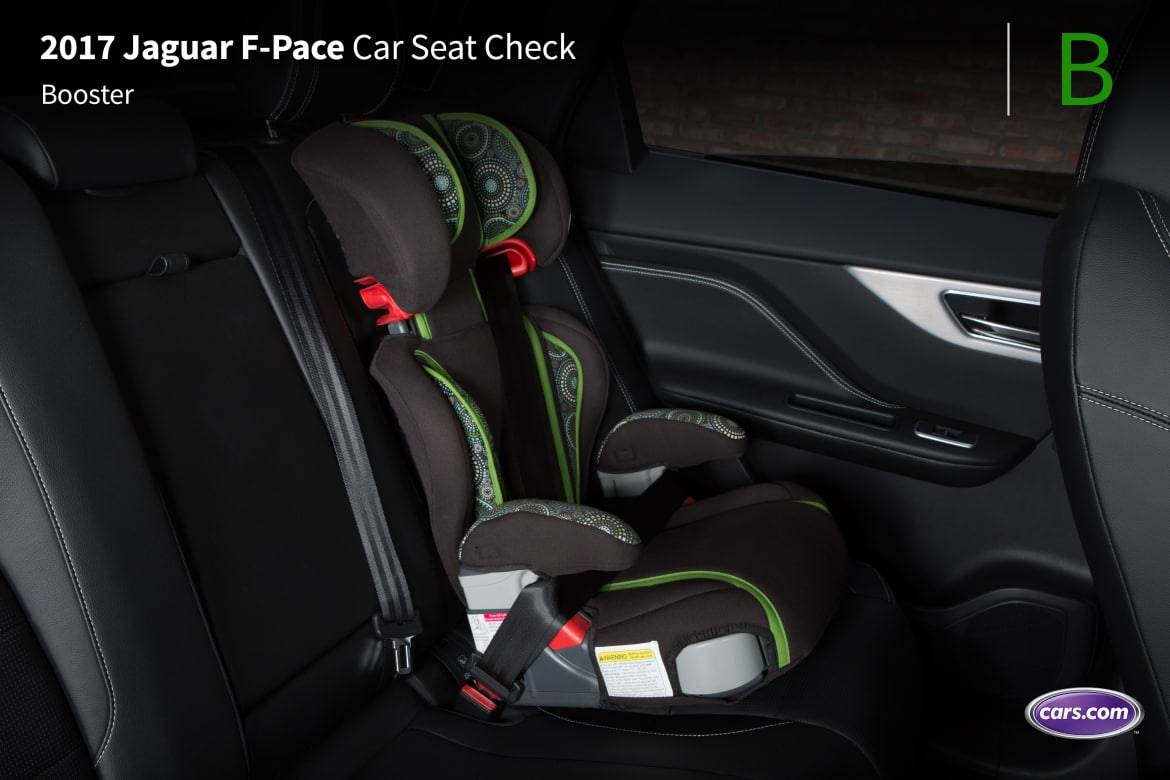







Grading Scale
A: Plenty of room for the car seat and the child; doesn’t impact driver or front-passenger legroom. Easy to find and connect to Latch and tether anchors. No fit issues involving head restraint or seat contouring. Easy access to the third row.
B: Plenty of room. One fit or connection issue. Some problems accessing third row when available.
C: Marginal room. Two fit or connection issues. Difficult to access third row when available.
D: Insufficient room. Two or more fit or connection issues.
F: Does not fit or is unsafe.
About Cars.com’s Car Seat Checks
Editors Jennifer Geiger and Jennifer Newman are certified child safety seat installation technicians; editor Matt Schmitz is working toward recertification.
For the Car Seat Check, we use a Graco SnugRide Classic Connect 30 infant-safety seat, a Britax Marathon convertible seat and Graco TurboBooster seat. The front seats are adjusted for a 6-foot driver and a shorter passenger. The three child seats are installed in the second row. The booster seat sits behind the driver’s seat, and the infant and convertible seats are installed behind the front passenger seat.
We also install the forward-facing convertible in the second row’s middle seat with the booster and infant seat in the outboard seats to see if three car seats will fit; a child sitting in the booster seat must be able to reach the seat belt buckle. If there’s a third row, we install the booster seat and a forward-facing convertible. To learn more about how we conduct our Car Seat Checks, go here.
Parents should also remember that they can use the Latch system or a seat belt to install a car seat, and that Latch anchors have a weight limit of 65 pounds, including the weight of the child and the weight of the seat itself.

News Editor Jennifer Geiger joined the automotive industry in 2003, much to the delight of her Corvette-obsessed dad. Jennifer is an expert reviewer, certified car-seat technician and mom of three. She wears a lot of hats — many of them while driving a minivan.
Featured stories
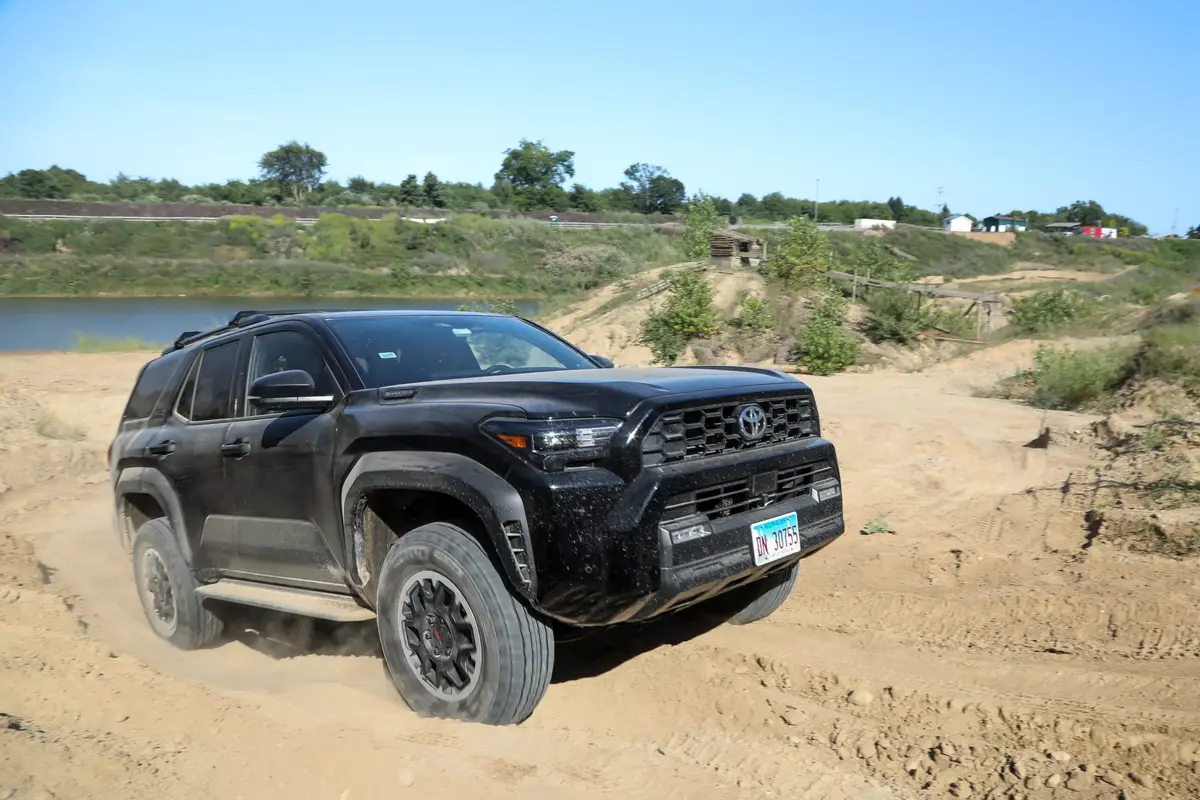
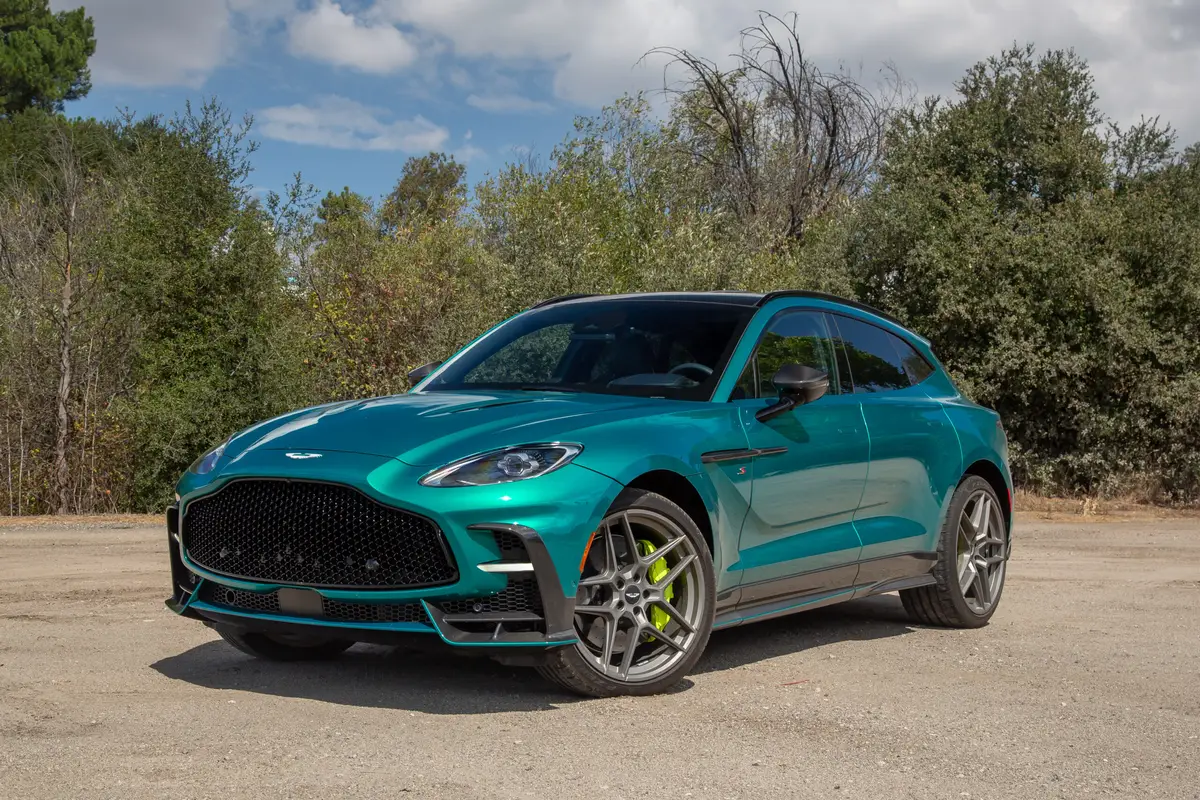
2026 Aston Martin DBX S Review: Excellence in (DB)X S

